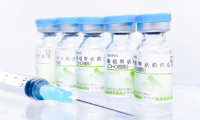-
Pain-Free, Low-Cost, Sensitive, Radiation-Free Device Detects Breast Cancer in Urine
- Source: drugdu
- 348
- February 22, 2024
-
Wireless Hepatitis B Test Kit Completes Screening and Data Collection in One Step
- Source: drugdu
- 449
- February 22, 2024
-
WuXi Advanced Therapies’ Philadelphia Site Approved by FDA to Start Manufacturing Iovance’s Melanoma T-cell Therapy
- Source: drugdu
- 466
- February 22, 2024
-
Adverse Event Prompts FDA Hold on Tests of Drug in Atopic Dermatitis & Asthma
- Source: drugdu
- 416
- February 22, 2024
-
Sperogenix Therapeutics introduced for US$124 million! New drug for Duchenne muscular dystrophy planned to be included in priority review
- Source: drugdu
- 301
- February 22, 2024
-
AstraZeneca’s Tagrisso combination approved by FDA for advanced lung cancer
- Source: drugdu
- 510
- February 22, 2024
-
ABPI publishes new prescribing support guide for healthcare professionals
- Source: drugdu
- 302
- February 22, 2024
-
ASTRUM-004 Featured on the Cover of Cancer Cell
- Source: drugdu
- 343
- February 22, 2024
-
Hengrui Medical made a new breakthrough in the field of medical nuclide preparation and successfully prepared 64Cu in batch.
- Source: drugdu
- 278
- February 22, 2024
your submission has already been received.
OK
Subscribe
Please enter a valid Email address!
Submit
The most relevant industry news & insight will be sent to you every two weeks.

















